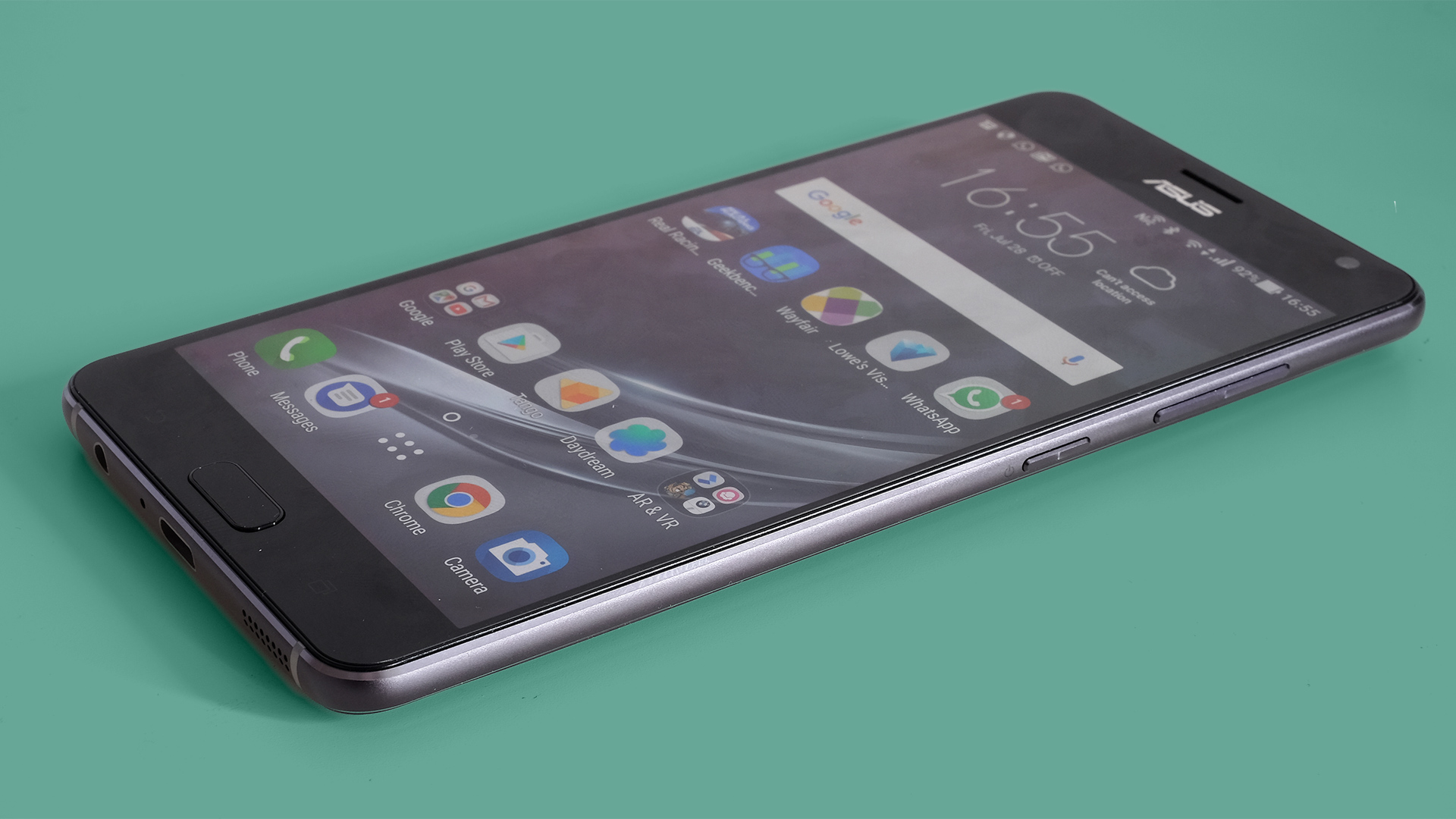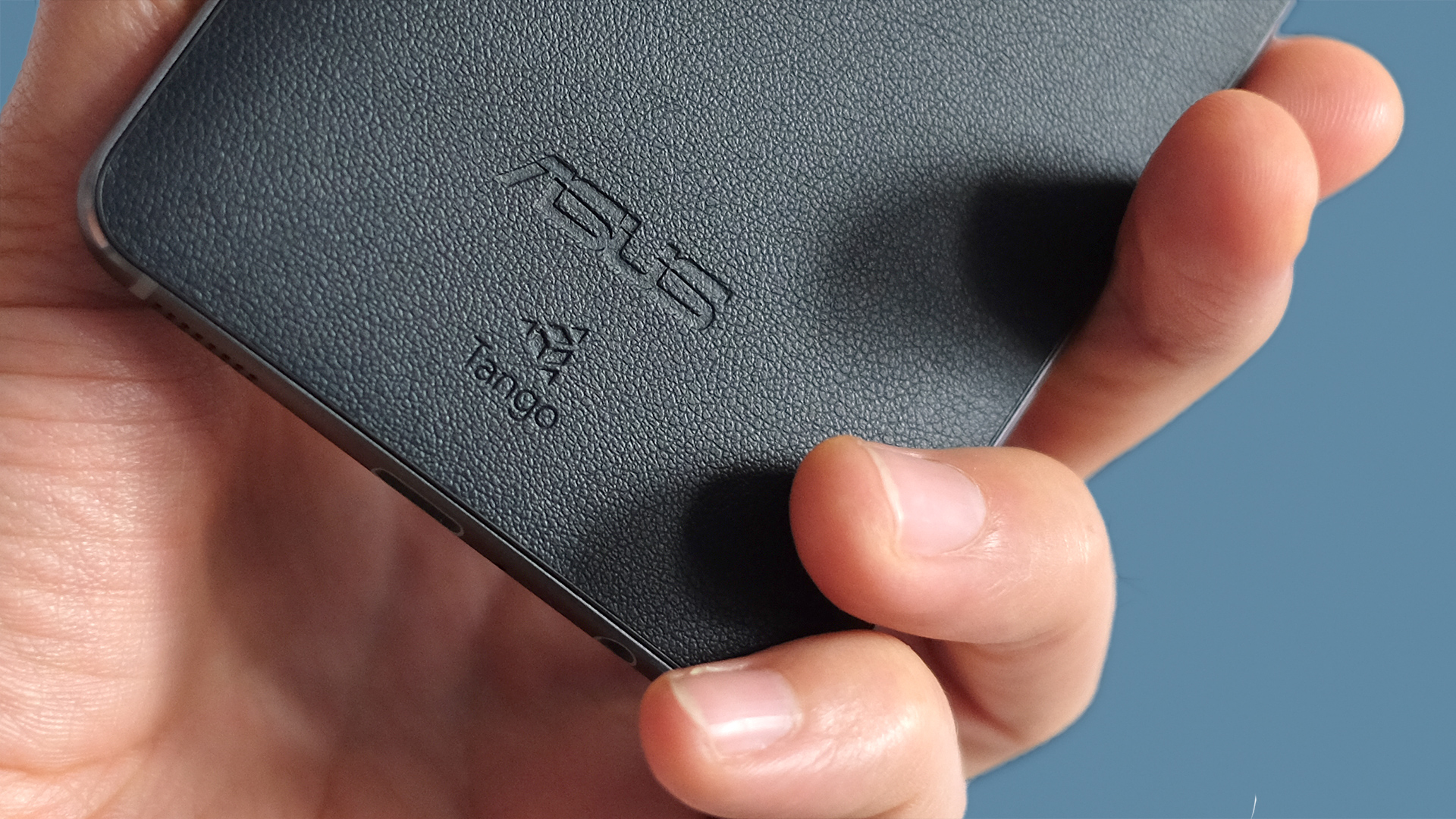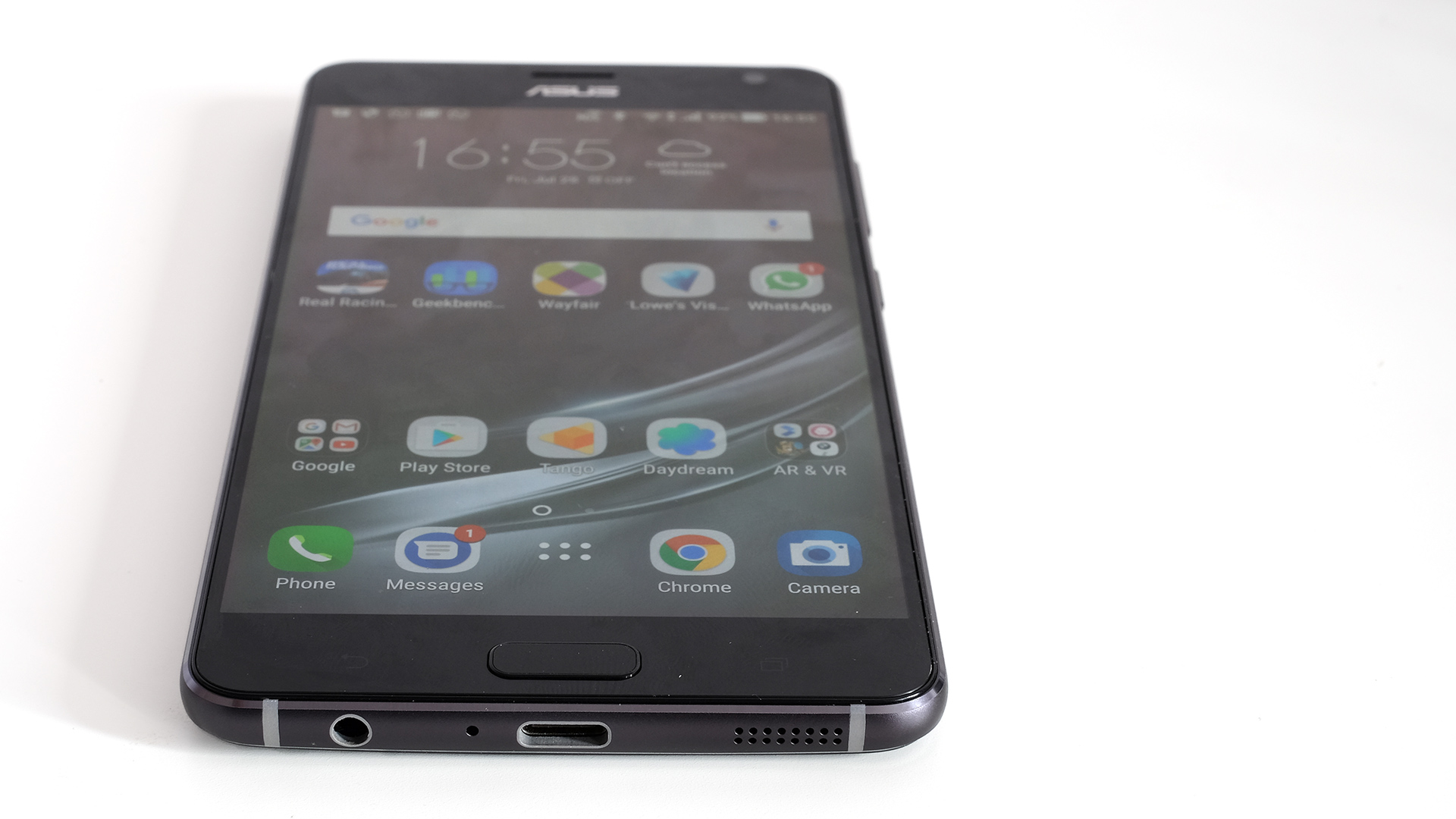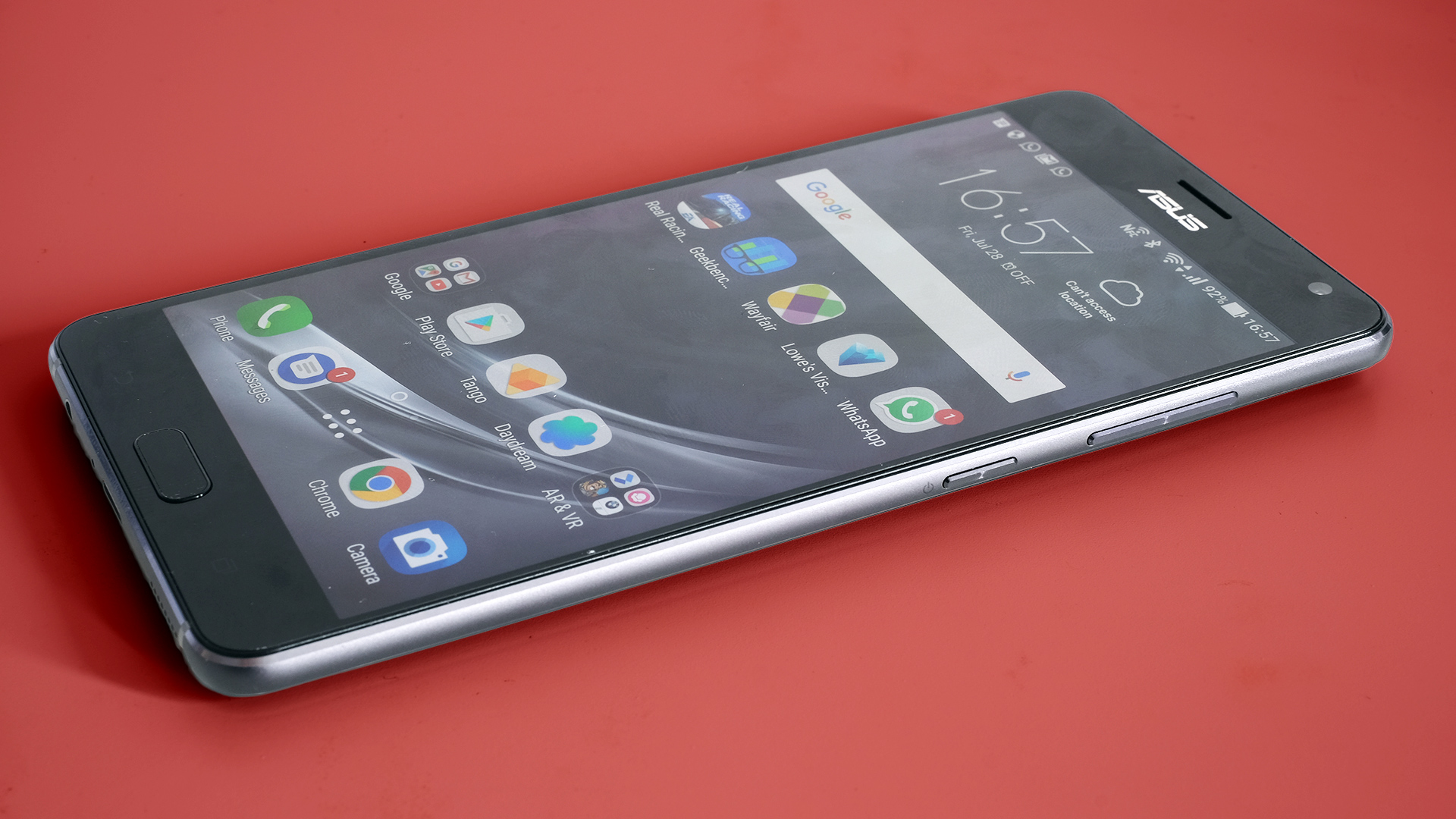TechRadar Verdict
The Asus Zenfone AR is a great demo for augmented reality and Daydream virtual reality, even if it shows AR is begging for more great apps. However, it’s a tough sell when the phone costs as much as a Galaxy S8 Plus but has a less striking design, no water resistance and less power.
Pros
- +
Great screen
- +
Good camera
- +
Great demo for mobile AR/VR
Cons
- -
Relatively plain design
- -
Very expensive
- -
Second-tier CPU
Why you can trust TechRadar
The Asus Zenfone AR is the first phone to be certified for both Google Tango and Daydream. These are the augmented reality and virtual reality platforms that set some standards for AR and VR on Android. So we’re not just left with barrel-scraping stuff that makes phone VR seem hokier than those blue and red 3D glasses that used to come free in cereal boxes.
It comes with the Google Daydream View headset if you pre-order from Asus, which helps to take at least one spike out of the porcupine attack-like sting of the price.
At £799 (around AU$1,320) the Asus Zenfone AR is a direct alternative to the Samsung Galaxy S8 Plus in the UK, though early US pricing puts it at a slightly more palatable $648.
The price sticks out further when you realize the Asus Zenfone AR doesn’t even have a latest-generation chipset, with the Snapdragon 821 instead of the 835 you get in the Samsung Galaxy S8 (US version), OnePlus 5 and HTC U11.
To get on with the Asus Zenfone AR, you need to disconnect the phone from its price. And as we’re here to deliver buying advice above all else, that’s a problem.
However, if you find a good deal for the Zenfone AR or just don’t care about spending an awful lot of money on a phone that won’t necessarily make that many friends jealous, it is a very strong mobile.
The screen is great, the camera array very good and it’s one of the best phones in the world right now for VR, beating the Sony Xperia XZ Premium and LG G6, and at least matching the Samsung Galaxy S8 Plus.
Sign up for breaking news, reviews, opinion, top tech deals, and more.

Asus Zenfone AR price and release date
- Shown to the world in January 2017
- Among the first wave of AR plus VR Google phones
- High price puts it in competition with the biggest names
The Asus Zenfone AR was first shown in early 2017, causing a bit of a fanfare as the first phone to arrive primed for both Daydream and Tango, rather than just a promise of support in the future.
In the UK, you’ll pay £799 SIM-free, making it one of the most expensive phones not inlaid with gold or diamonds. That amounts to around AU$1,320, though in the US you can pre-order it for the relatively low (but still high) price of $648.
AR plus VR and other high-end goodies
- Triple rear camera for augmented reality
- Large OLED screen
- Powerful, but not the most powerful around
The Asus Zenfone AR is a large, high-end Android phone with an important “first”, as a phone that launches with Tango and Daydream support. Daydream in particular at first seemed something that would quickly filter through to loads of Android phones. But it hasn’t.
The Asus Zenfone AR has what it takes for good phone VR thanks to its high-resolution OLED screen. It’s 5.7 inches across, with a resolution of 1440 x 2560.
The CPU is a high-end, but no longer top-end, quad-core Snapdragon 821. While there are versions of the Asus Zenfone AR with a mammoth 8GB of RAM and 128GB of storage, the phone we’re reviewing has 6GB of RAM and 64GB of storage.
That’s a lot, but no more than some competitors, such as the OnePlus 5.

The camera does have more to show off than most, though. Instead of keeping the megapixel count low to improve low-light performance, the Asus Zenfone AR has a very high-res 23MP main camera and 4-axis optical image stabilization to help out at night.
There are two extra cameras on the back too. One is a lower-quality depth-sensing camera with IR, the other used to track motion. This trio is what makes the Asus Zenfone AR ready for Tango-grade augmented reality.
On the front, you get an 8MP selfie camera, but the rear team is what grabs our attention.
Other neat parts worth noting are a fingerprint scanner on the front, a leather-effect finish on the back and a dual-LED flash on the back.
The big question of the Asus Zenfone AR is whether these features are worth the price. Having spent a good while using the Zenfone AR, it’s a great phone but a tough sell.
Design and display
- Big, bold, high-res 5.7-inch OLED screen
- Stainless steel sides, faux-leather back
- Front-mounted fingerprint scanner
The Asus Zenfone AR is a big phone made for the enthusiast. Who else, after all, would be willing to spend this much on an Asus phone? No-one we know.
From a distance, it’s not as striking as something like the Samsung Galaxy S8 Plus. There’s some screen surround, which is rapidly disappearing from the most expensive phones, and the front of the Zenfone AR is not curved. Flat is so 2013.
The Asus Zenfone AR is also less stylish than some other phones at the price. Other top phone makers resist plastering their brand on the front as it’s not a great look, and the stainless-steel camera housing on the back has a whiff of Swiss Army Knife to it. But there is a lot of tech to show off.

Get closer and you’ll see it’s not the mostly-plain rectangle of black it may at first appear. The sides are smartly-finished aluminum and the back has a leather-effect finish rather than glass, basic plastic or metal.
While it’s synthetic rather than real leather, it looks and feels similar to the real stuff. And it’s less of a cringey show-off than previous leather phones like the LG G4.
It’s nice to handle. It’s well-made. But the Asus Zenfone AR doesn’t quite have the visual impact of other phones at the price.
One of the main practical omissions is water resistance: there isn’t any. The Samsung Galaxy S8, LG G6 and HTC U11 can all survive a soak.

Hardware-wise you get a clicky finger scanner below the screen that acts as a normal home button if you don’t use finger security, and light-up soft keys to either side.
This isn’t the fastest fingerprint scanner around, a beat slower than something like the Honor 9, but only those who have spent altogether too much time with phones will notice.
The nanoSIM lives in the usual tray that pops out of the Asus Zenfone AR’s side, and there’s space for a microSD card if the 64/128GB of storage isn’t enough for you.
The phone’s screen is a 5.7-inch 1440 x 2560 OLED panel. It’s big, sharp and punchy, with an excellent 515ppi pixel density.

Like most OLED screens, colors are vivid and contrast is superb. Asus also gives you comprehensive control over how the display looks.
As standard it’s set to a mode called Super Color, which has a classic OLED-style oversaturated look, much like a high-end Samsung phone. There’s also a Standard mode with slightly calmed-down color and a manual mode that lets you choose the color saturation and even the hue.
You can make the Asus Zenfone AR completely monochrome, or its colors flat-out wrong. Less wide-ranging control would probably be more useful, less off-putting. However, as with any of these controls most people are likely to leave it on the default setting anyway.
The Asus Zenfone AR also has a blue light reduction mode, designed to cause less eye strain and be kinder to your circadian rhythms if you go on a late-night Facebook binge.

Andrew is a freelance journalist and has been writing and editing for some of the UK's top tech and lifestyle publications including TrustedReviews, Stuff, T3, TechRadar, Lifehacker and others.
